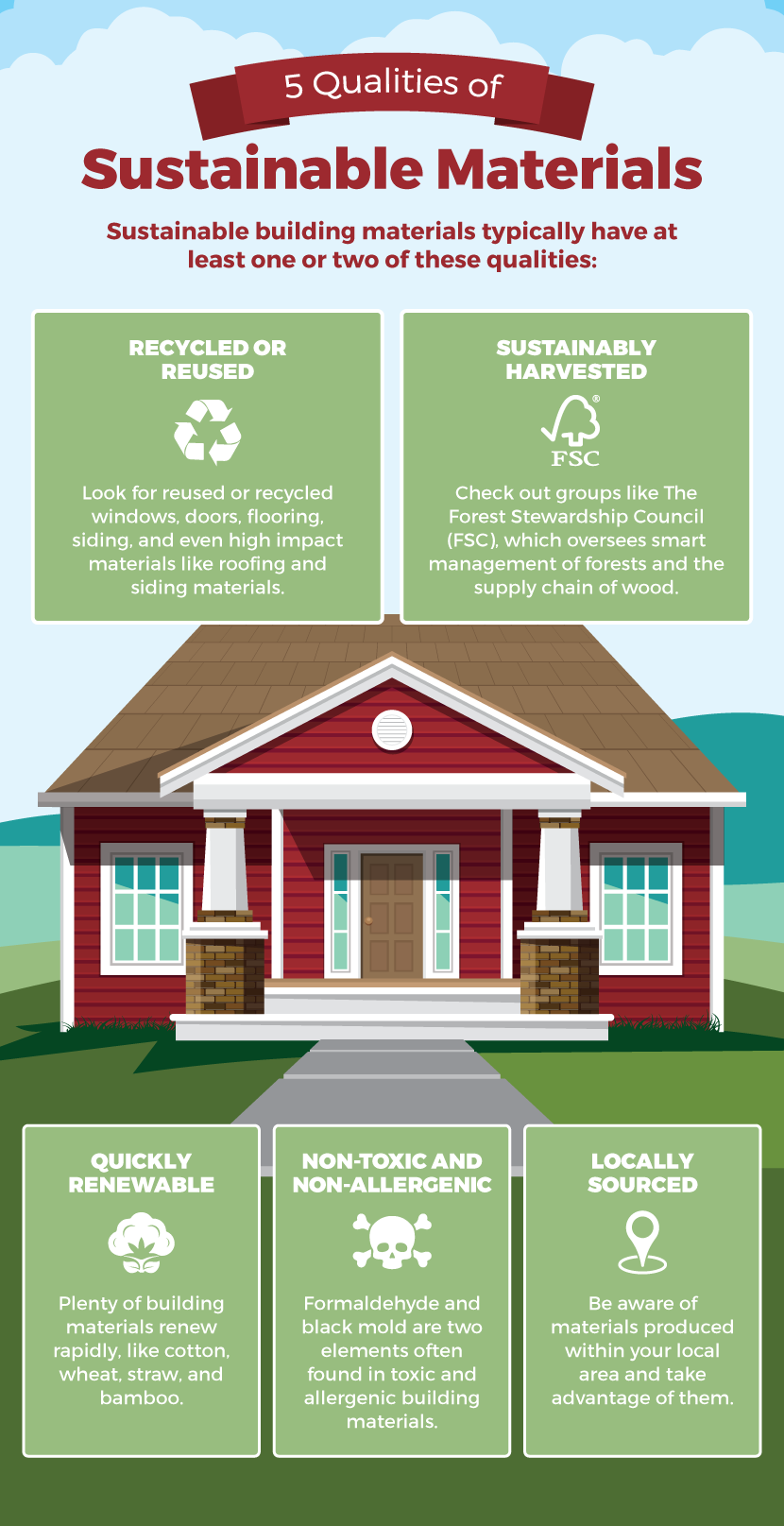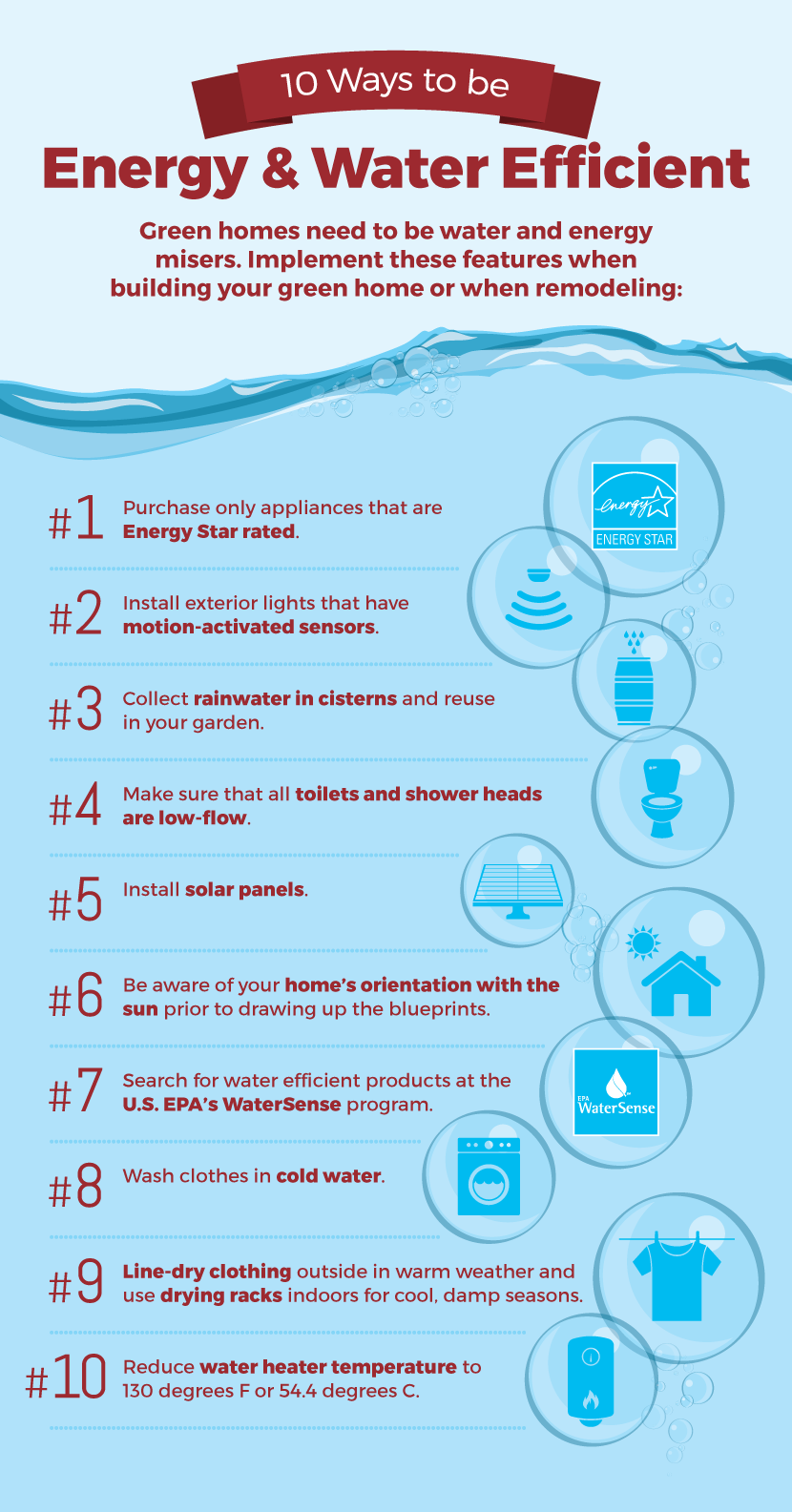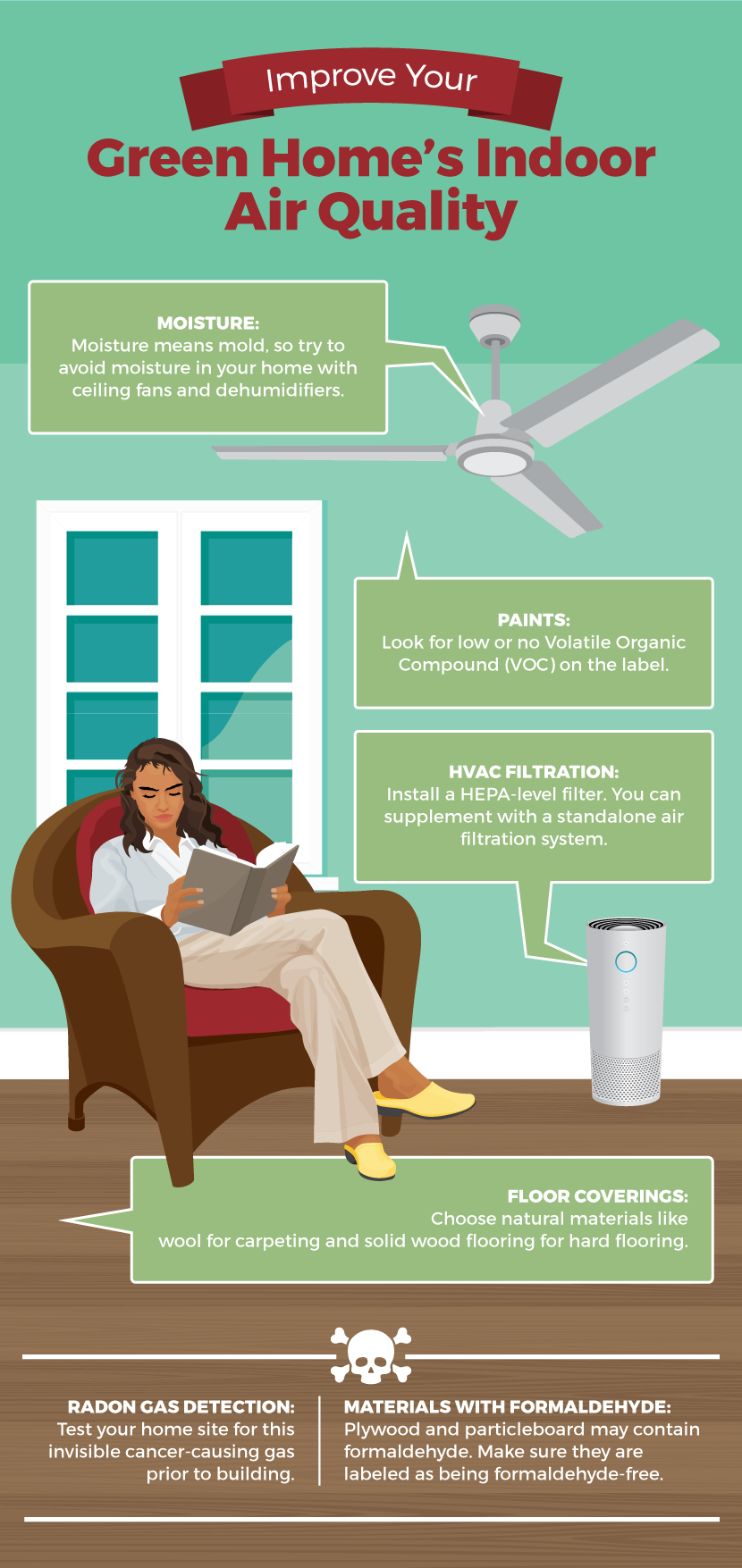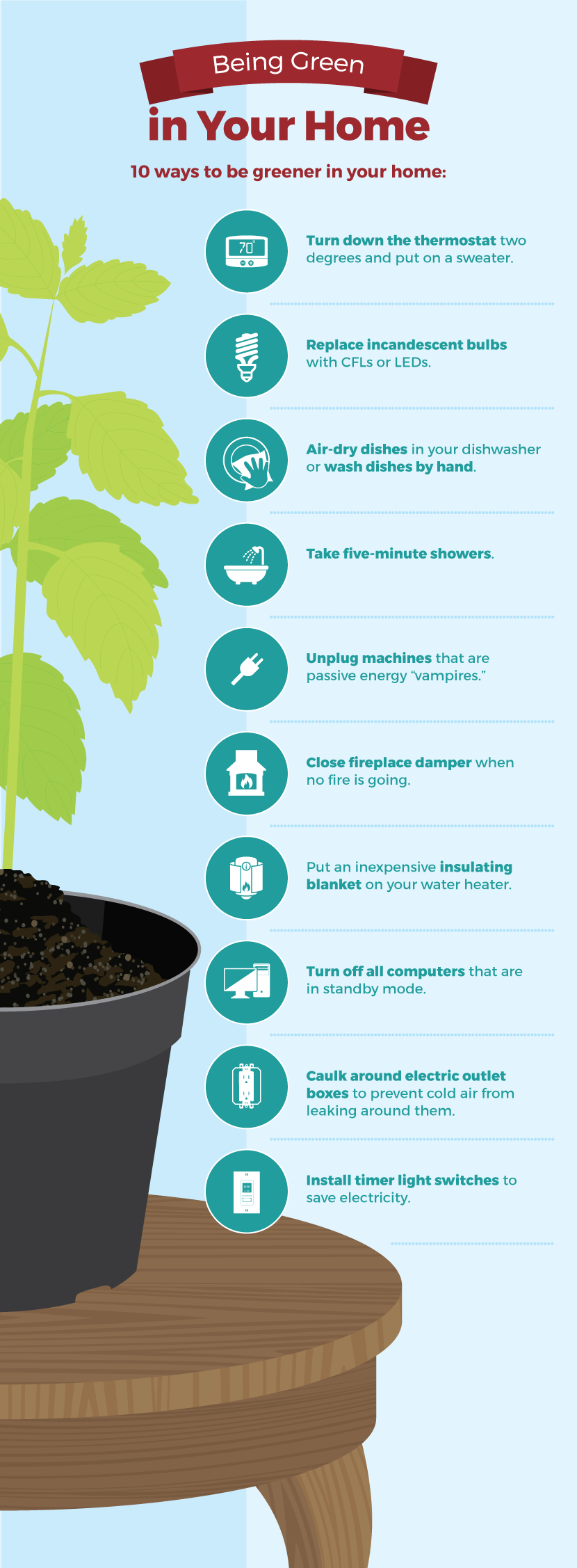Green Home Building & Sustainable Homes
Procrastinate no longer. The time to build your green and sustainable home is now. Like so many of us, you may have been sitting back and dreaming about building a new home or retrofitting an existing home so that it perfectly meshes with the environment. It would be a home that is as eco-friendly and green as it is cozy, functional, and smart to live in. This can be done and the time can be now.
No longer is it necessary to compromise comfort in order to be environmentally conscious. Because our world is rapidly changing, often in ways that are less than desirable, it is up to each and every one of us to make positive changes. And those changes can begin in that one area we all have the most control over: our home.
Building Your Dream Green Home
Building a green home from the ground up gives you the perfect opportunity to do everything the right way from the very beginning. This can even include large-scale projects, such as adding on a second floor or building an addition.
Keeping green and staying on the right side of things with the environment is easy to do when you keep three major ideas in mind:
Use Sustainable Building Materials
In the context of green homes, sustainable is a catch-all term that experts generally agree hits as many of these points as possible:
- Recycled or Reused: A recycled material is one that has been reprocessed, such as turning rubber tires into flooring. Reused materials are used whole (but usually with fixes), such as windows, doors, and flooring.
- Sustainably Harvested: Wood is the prime example of a material that is sustainably harvested. This means it comes from well-managed forests and that the supply chain is documented and certified.
- Quickly Renewable: Bamboo, mainly used for flooring, is a good example of a sustainable material that renews quickly, as it is a grass and not a wood.
- Non-Toxic and Non-Allergenic: Formaldehyde and black mold are two elements often found in toxic and allergenic building materials.
- Locally Sourced: Whenever possible, materials are best sourced within a roughly 100-mile radius, rather than being freighted great distances.https://sustainabilityworkshop.autodesk.com/buildings/green-building-materials
Build Water- and Energy-Efficiency into the Plans
Intelligently built green homes are not water and energy hogs. Instead, they sip both resources.
Water efficiency can mean collecting rainwater and reusing graywater, such as dishwasher, laundry, and sink run-off (not toilet water). Or it can mean simple measures like installing low-flow shower heads and toilets.
Energy efficiency is all about installing energy-smart appliances, insulating to the max, and installing plenty of skylights and windows for increased natural light.
Emphasize Indoor Air Quality (IAQ)
Using sustainable building materials is the first step in ensuring IAQ by minimizing or eliminating materials that contribute toxins and allergens to the air.
Water vapor, benign by itself, can lead to the growth of toxic black mold. Formaldehyde is an example of a toxin that is frequently found in non-sustainable building materials.
Choose low VOC paints. Pick floor coverings made of natural materials like wood for hard flooring and wool for carpeting, rather than vinyl or man-made carpet.

Learn How to Purchase Sustainable Materials
Choosing sustainable materials is the cornerstone of building a green home. There is no single type of material that is considered to be universally sustainable. Instead, sustainability is more like a bundle of good points that you are looking for in a material. The more of these good points you can bring together in one, the better.
Recycled or Reused Materials
A recycled material is one which as been reprocessed, such as turning rubber tires into flooring or plastic bottles into fences and benches.
Reused materials are those which are used whole, but are typically refurbished: windows, doors, flooring, cabinets, plumbing fixtures. Even copper pipe is considered valuable enough to reuse.
Sustainably Harvested
Sustainably harvested means that the materials come from transparent and well managed production areas and that the supply chain is documented and certified. Wood certified by The Forest Stewardship Council is considered to be sustainably harvested.
Quickly Renewable
Examples of building materials that have a fast turn-around growing cycle: bamboo, cork, cotton (especially when recycled), natural linoleum such as Marmoleum, wood, wheatboard, and strawboard.
Non-Toxic and Non-Allergenic
Formaldehyde is one element often found in toxic building materials.
Locally Sourced
Why support a building industry that ships your sheet of plywood across thousands of miles of ocean from Indonesia? Instead, shop where you live.
Be aware of your local natural resources and use them. For example, homeowners in the Pacific Northwest can use locally sourced lumber. People in New England can find plentiful sources of natural stone there.
As noted, it may not be possible to check off all of the boxes when it comes to sustainable materials, and one perfect example is bamboo flooring. While eco-friendly and green in so many ways, it fails in another point: local sourcing. Most bamboo flooring is produced in China and Indonesia and is container-shipped thousands of miles to buyers.http://www.dummies.com/home-garden/green-building/keeping-forests-green-sustainably-harvested-wood

Energy and Water Efficiency Made Simple
For ages, homes have unwisely used energy (which can include electricity and gas) and water. Both were seen by builders as infinitely renewable resources. Today, we know better than that. Here are ways you can build, remodel, or fix your green home so that it uses these resources with care.
Energy Efficiency
- Install EnergyStar or similarly rated appliances.
- Prior to building, orient the site so its façade faces the sun.
- Put in a timer thermostat – most people can do this themselves.
- Make sure that outside lights are on a timer or are turned on only when needed.
- Insulate your attic.
- Draw blinds in both summer and winter to boost windows’ insulating effect.
- Replace windows that have lost their insulating gas.
- Turn off all lights when not in use.
- Clean and change furnace filters frequently.
- Reduce water temperature on your water heater to 130 degrees F or 54.4 degrees C.
- Seal all air leaks in the house with caulk or weather stripping.
- Wash clothes in cold water.
- Line-dry clothing whenever possible.
Water Efficiency

Improve Your Indoor Air Quality (IAQ)
Nothing is more important than the air you breathe. Yet prior to the green home building movement, few designers, architects, and builders gave much thought to the quality of the air within the home. Now, with more man-made materials entering our homes and a greater abundance of chemicals, we realize how vitally important air quality is.
When building or refurbishing your home, you should know about these critical areas:
- Paints: Most acrylic/latex paints on the market are low or no VOC. Oil-based paints (generally not on the market any longer, but still available in quart sizes) do contain VOCs and should be avoided.
- Floor Coverings: Carpets, in general, do not rank high when it comes to improving air quality as they harbor dust. If you must have carpeting, choose a natural material such as wool.
- Moisture (Mold): Moisture means mold, and while that mold is not always toxic, it sometimes can be. Be sure to install bathroom and laundry room ceiling fans that don’t allow water to collect on walls. Regularly check remote locations like crawlspaces and attics to ensure that no mold is growing.
- HVAC Filtration: If you have central air or furnace, the one point in your home that all air passes through is your filter. Make sure you have a HEPA-level filter. You can supplement this (or replace it, if you do not have a central system) with a standalone air filtration system.
- Radon: Radon is an invisible air-borne radioactive gas that is the second most common cause of lung cancer in the U.S., second to smoking. Test your home site prior to building.
- Building Materials with Formaldehyde: Plywood and particleboard both may contain formaldehyde (natural wood does not). When shopping for materials or during discussions with your builder, insist on formaldehyde-free materials.https://greenbuildingsolutions.org/sustainable-design/benefits-of-green-building/indoor-life-quality-indoor-air-qualityhttps://www.epa.gov/indoor-air-quality-iaq/guide-air-cleaners-home

Answer These 10 Questions and Be Greener in Your Home
Whether you have the greenest, award winning home on the block or a house that is just trying its best, you can boost the power of your eco-friendly strategies by honestly answering these questions:
- Do I need my thermostat to be this high? Could I set it down two degrees and put on a sweater instead?
- Can I get rid of all of my incandescent bulbs and replace them with CFLs or LEDs?
- How about letting my dishes air dry in the dishwasher? Better yet, can I do without the dishwasher?
- Do I really need that 20-minute shower or can I do with a five minute one?
- Do I have unused electronics plugged in that are passive energy “vampires”?
- Do I have the fireplace damper open when there is no fire going?
- What about buying an inexpensive insulating blanket for my water heater?
- Do I have any computers running right now?
- Have I caulked around my electric outlet boxes to prevent cold air from leaking around them?
- Do I ever have lights on in a room when no one is there? Would I be willing to install a timer light switch to save electricity?
Building a green home means using sustainable materials, improving energy and water efficiency, and taking measures to improve your indoor air quality.
Embed the article on your site

